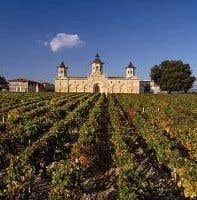Talking to people who live in and around Bordeaux recently, I have been assailed with tales of woe, of another summer that has been disappointingly cool and damp, with widespread mildew and, still, a desperate need for more warmth and sunshine. “2008 may make 2007 look pretty good,” one château owner told me ruefully last week. As in much of the rest of France, growers report that the crop is likely to be relatively small and late.
So I was intrigued to receive the following report on the 2008 Bordeaux harvest from the official Comité Interprofessionnel des Vins de Bordeaux on Friday. It looks as though, as ever, they are putting the bravest face imaginable on the current situation. Of course if Bordeaux were to have an uninterrupted spell of fine, warm weather from now until the end of September, some very nice wine might be made, but the weather forecast does not look particularly helpful, and we might even start feeling sorry for the Bordelais coping with three such demanding vintages in a row as 2006, 2007 and 2008. Is nature making them pay the price for 2005?
Later - Just in from someone currently working in Burgundy: 'Unfortunately 2008 is not shaping up well as yet. I sampled some Meursault villages and premier crus on Thursday with results in the 10.4-11.8 range potential alcohol. There is some rot and oidium out there and as I'm sure you know, there was localized hail damage during summer. Unfortunately, it rained on Friday and Saturday. It has been clear the last couple of days but not particularly warm.'
Bordeaux, just before the harvests... Is 2008 set to become another 1988? Twenty years separates them, but weather conditions (average temperatures, hours of sunshine, rainfall levels), phenological growth stages, harvest dates and yield forecasts are all extremely similar for these two vintages. 1988 was described as a ‘classic Bordeaux’ vintage.
Harvests of white grapes are beginning this week in the earliest ripening areas and will start generally as of next week, depending on weather conditions and appellations.
Red grape harvests are planned to start at the end of September/beginning of October [much later than in most recent years of good reputation – JR]; dates will vary.
1988 / 2008
Average temperatures:
May 16.0° / 17.1°
Jun 18.4° / 19.0°
Jul 19.0° / 20.6°
Aug 20.5° / 20.5°
Rainfall from Jan to Aug:
780 mm / 658 mm
Hours of sunshine:
1,591 / 1,474
The harvest volume will be relatively low, between 5.2 million and 5.5 million hectolitres – while the average over the past five years has been 6 million hectolitres – thanks to such physiological phenomena as a difficult start to the flowering, combined with adverse weather conditions (hail, frost) and the pressure of mildew.
At present, the vines are generally healthy. Ripeness is developing slowly. The stage of ripeness varies a great deal from one plot to another. This depends on where the vines are planted, the vineyard’s healthiness and the various characteristics of the soil. There are currently large differences between daytime and night-time temperatures, which are encouraging the synthesis of aromas for white grapes and anthocyanins for reds. Red grapes are excellent. The skins of the berries are thick, rich in pigments and tannins.
This year, the vine’s growth cycle and the grapes’ ripening process had to adapt to weather conditions that readily played yo-yo, giving sudden changes from heavy rainstorms to hours of warm sunshine, or turning from cool spells to periods of hot temperatures.
March saw high rainfall levels and some sudden heavy showers; average temperatures were close to the seasonal norm; there were less hours of sunshine. In the vineyards: budburst (start of the vegetative cycle) began at the beginning of March.
April was without excess. Rainfall levels and the number of hours of sunshine were close to average figures; temperatures were slightly above average. In the vineyards there was severe frost on 6 and 7 Apr which destroyed numerous buds and the first stages of tiny bunches beginning to form, especially for white grapes.
May was capricious. There were heavy storms and many downpours, very few hours of sunshine and mild temperatures. In the vineyards the vines grew vigorously. This month saw the appearance of mildew, a fungus that develops on leaves and then grapes and if it is not kept under control can destroy an entire harvest. If their vines were affected, winegrowers had to use the appropriate treatments.
June was changeable with cool temperatures and stormy-rainy spells at the beginning of the month. Warm temperatures settled in mid-June, giving many hours of glorious sunshine. In the vineyards flowering started at the beginning of June and lasted for a period of 10 to 15 days.
July was magnificent – a particularly dry month (there was a lack of rainfall), with typical summer temperatures, and a super abundance of hours of sunshine. In the vineyards green harvesting was carried out. There were a few scattered hail showers.
August was dreary. Despite seasonal temperatures, there were slightly less hours of sunshine and rainfall levels recorded were higher than the average for the past 30 years. In the vineyards: the mid-veraison stage is estimated to have occurred on around 15 Aug; this date varies from one grape variety to another and on different terroirs. Ripening developed slowly and inconsistently.

